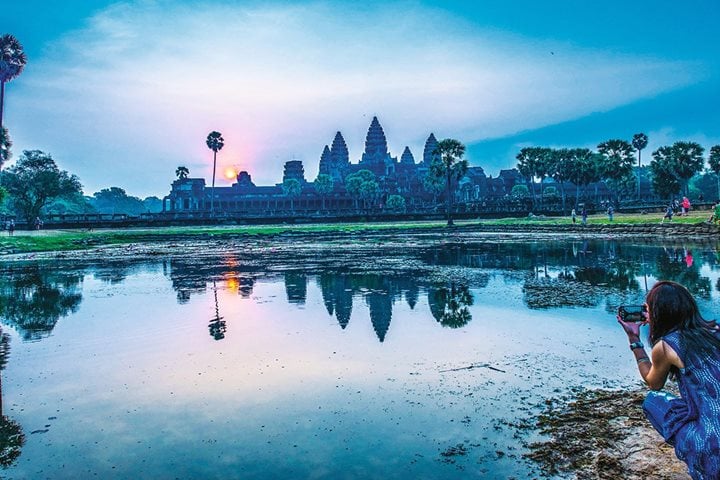The largest Buddhist monument in the world, Borobudur Temple rises towards the heavens from a Javanese hilltop. This complex feat of architecture is an absolute must-see for any traveler to Indonesia. On our new itinerary, Jewels of the Java Sea: An Exploration Between Bali and Singapore, you’ll spend an entire day exploring, learning, and being awe-struck by this unforgettable UNESCO site. Here are just a few fascinating things to know about the glorious shrine to Buddha. Get Inspired By Photos, Videos, Webinars, Stories, And Exclusive Offers. Sign Up
Borobudur Temple was built during the Golden Age of the Śailendra Dynasty, probably around 760 C.E. It likely took more than 70 years to raise this 10-story-high edifice out of two million blocks of volcanic stone. No mortar was used—the stones are either stacked or cut to create intricate interlocking pieces. It’s hard to believe something so impressive was made without modern-day tools—in fact, one legend has it that a heavenly architect built the monument in a single day and has watched over it through the ages.
On first glance, the temple is shaped like a stepped pyramid. But it’s much more complex and meaningful, once you discover the symbolism behind it. Viewed from above, it appears as a gigantic 3-dimensional mandala—the mystic Buddhist symbol of the universe which combines the square as Earth and the circle as Heaven.
In Buddhist cosmology, the universe is divided into three realms, and so the monument itself is divided into three parts: a pyramidal base with five concentric square terraces; the trunk of a cone with three circular platforms; and, at the top, a 30-foot-high stupa. Kamadhatu (the realm of desire) is represented by the base, rupadhatu (the realm of forms) by the square terraces, and arupadhatu (the realm of formlessness) by the circular platforms and the stupa.
The very act of building a stupa—bell-shaped structures which house sacred relics—is thought to ensure good karma in the next life. In addition to the central one at the top, 72 openwork stupas ring the circular platforms, and each holds a statue of Buddha. There are more than 500 sitting Buddha statues throughout the temple complex.
Borobudur is not just a shrine—it also serves as a Buddhist pilgrimage. Meticulously carved stone reliefs, which line the temple walls, tell the story of Buddha’s life and his teachings (the Dharma). Amounting to more than a mile of continuous sculpture, the carvings help guide pilgrims on a physical and spiritual journey to the top. Pilgrims begin at the base of the structure and follow the path clockwise around the monument, slowly ascending on the way to the bodhisattva ideal of enlightenment.
Whether you’re in search of nirvana or just a spectacular view, the top of the temple will not disappoint. Gazing out you’re surrounded by lush green jungle with no less than three volcanoes looming in the distance. These facts barely begin to scratch the surface—there’s much more to delve into from history to theology to art.




